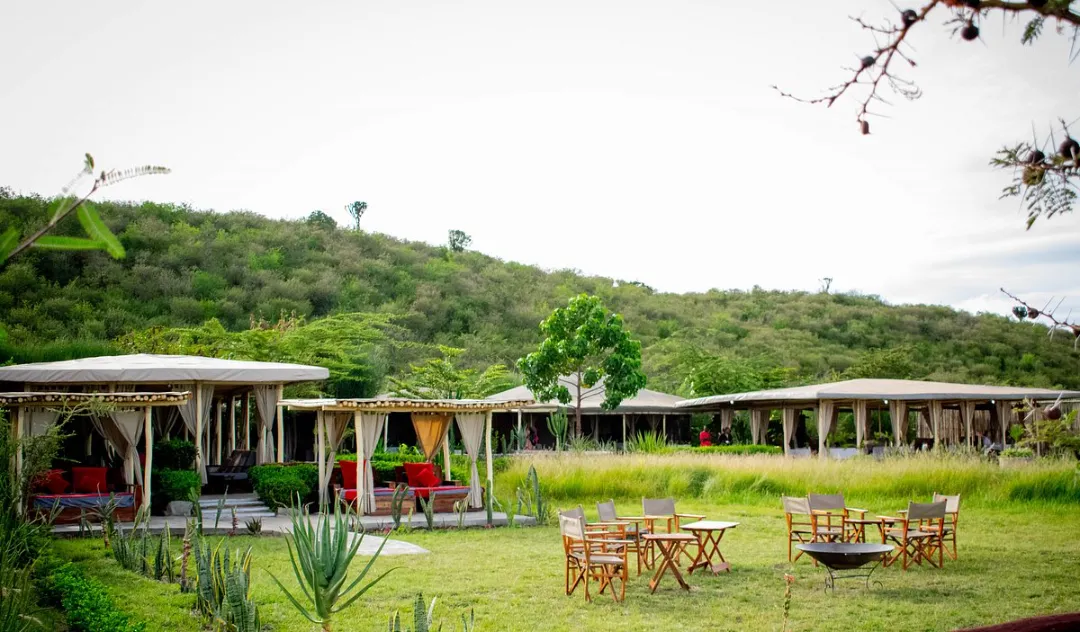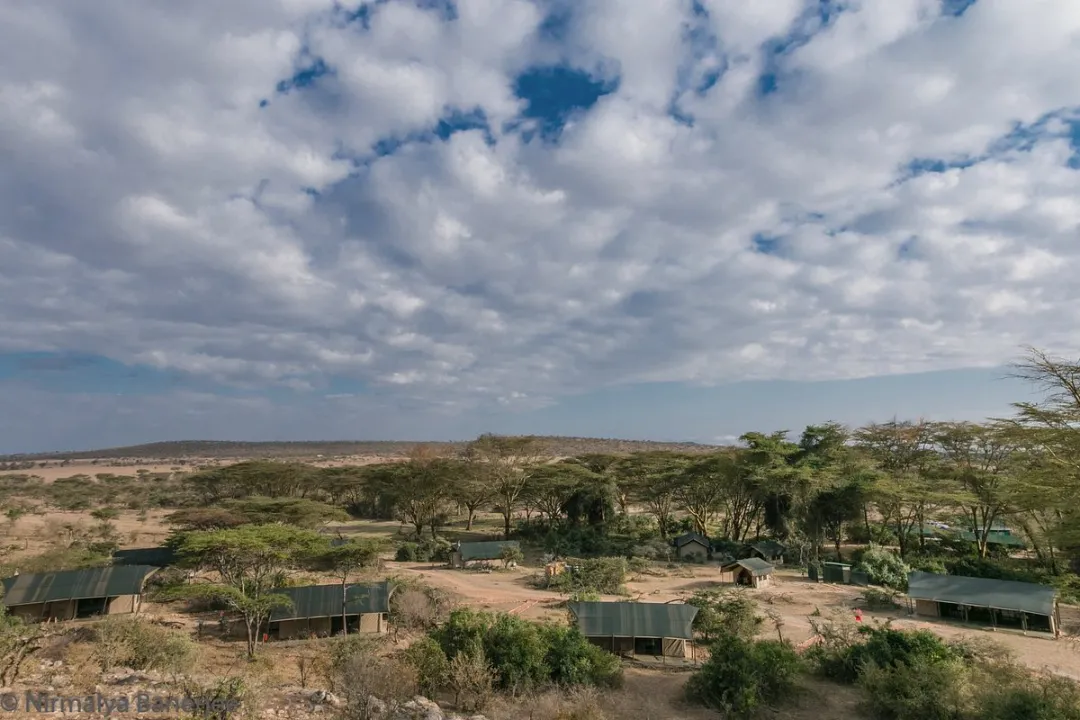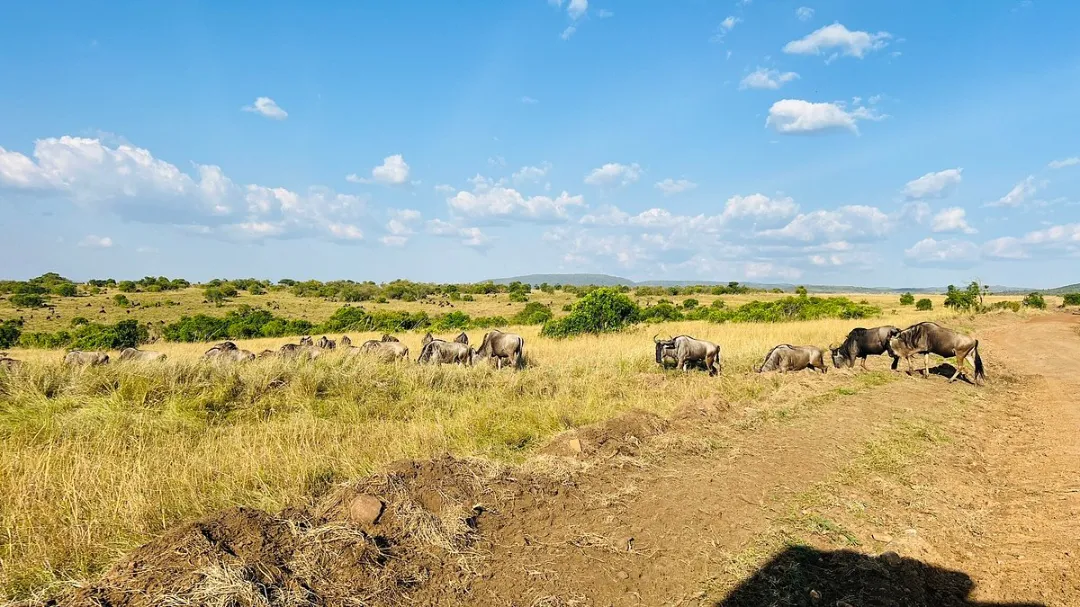Top Masai Mara FAQ: Essential Info for Your Safari Adventure
Table of Contents
Planning a trip to Maasai Mara? This Masai Mara FAQ covers everything you need to know- from key attractions and the best times to visit, to transport options and safety tips.
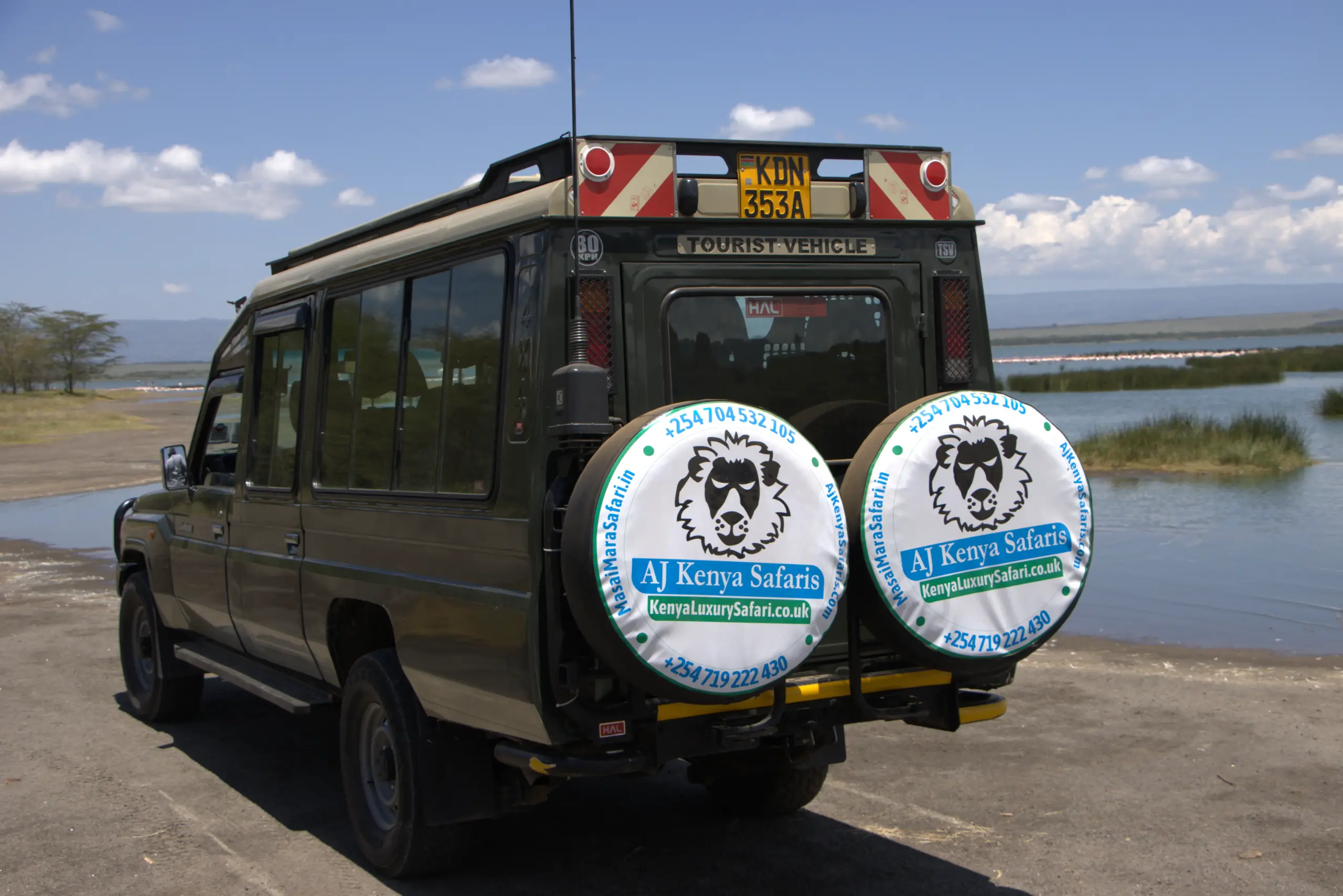
Key Takeaways
The Masai Mara National Reserve is a premier wildlife destination covering approximately 1,510 square kilometers and part of the Mara-Serengeti ecosystem. It’s recognized as one of the seven natural wonders of the world due to its incredible biodiversity and the annual Great Migration.
The dry season from June to October promises excellent game viewing, particularly during the Great Wildebeest Migration, with peak river crossings occurring between July and October. During this time, a guided safari can enhance your experience, providing expert insights into the behaviors and habitats of the abundant resident wildlife.
Safety precautions are essential while visiting the Masai Mara, including following guide instructions, maintaining a respectful distance from wildlife, and using insect repellent.
What is the Masai Mara National Reserve?
The Masai Mara National Reserve spans approximately 1,510 square kilometers and is renowned for its high density of wildlife, making it one of the premier safari destinations in East African region. Situated in southwestern Kenya, the reserve is part of the larger Mara-Serengeti ecosystem, which extends into Tanzania’s Serengeti National Park. This region is masai mara famous for its stunning landscapes, ranging from vast grassy plains to rolling hills, all dotted with distinctive acacia trees.
The reserve was designated as a protected wildlife area in 1961 and has since expanded to include a variety of conservancies that further protect its rich biodiversity. Over the years, Masai Mara has grown in prominence and continues to attract visitors eager to experience its unique natural beauty and wildlife.
The name “Mara” translates to “spotted” in the Maasai language, aptly describing the reserve’s landscape, which is punctuated by clusters of trees, scrub, and savannah. This distinctive terrain provides the perfect backdrop for the incredible wildlife encounters that await visitors.
Best Time to Visit Masai Mara
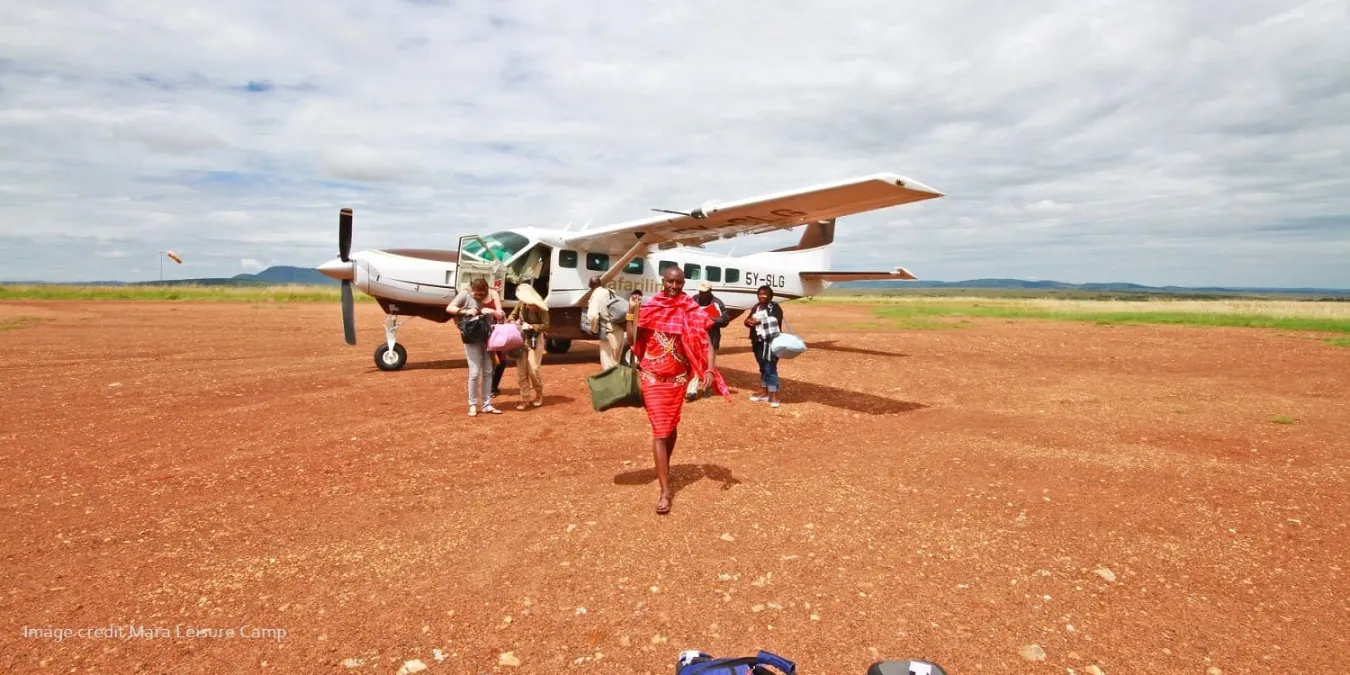
Timing is crucial when planning your visit to the Masai Mara. Considering the seasons and animal movements is key to the best wildlife viewing experiences. The dry season, from June to October, is considered the best time to visit the Masai Mara National Reserve. During this period, the vegetation is less dense, making it easier to spot animals. Additionally, the dry conditions draw wildlife to water sources, increasing your chances of witnessing diverse species in one place.
One of the most iconic events in the Masai Mara is the Great Wildebeest Migration. This annual spectacle sees over 1.5 million wildebeests, along with zebras and gazelles, journey from the Serengeti National Park to the Masai Mara in search of greener pastures. The peak times to witness these dramatic river crossings, particularly at the Mara River, are between July and October.
While the dry season is ideal for game viewing, visiting during the wet season has its own charm. However, the wet season, particularly in March and April, can present challenges such as muddy roads and less wildlife visibility. Each season offers unique experiences, so choose the one that aligns best with your safari goals.
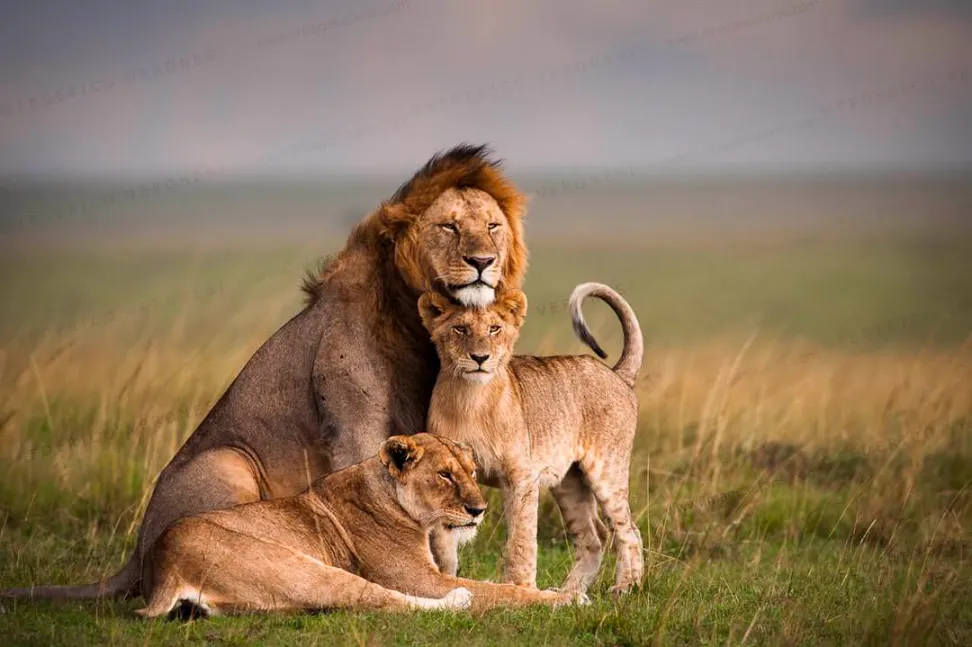
How to Get to Masai Mara
Reaching the Masai Mara can be an adventure in itself. If you opt for road travel from Nairobi, the journey covers a distance of approximately 225 to 275 kilometers, depending on the entry gate you choose. The drive typically takes about 5.5 to 6.5 hours, with the last stretch of about 75 kilometers being a rough gravel road. This route offers the chance to see the changing landscapes of Kenya, from bustling urban areas to serene countryside.
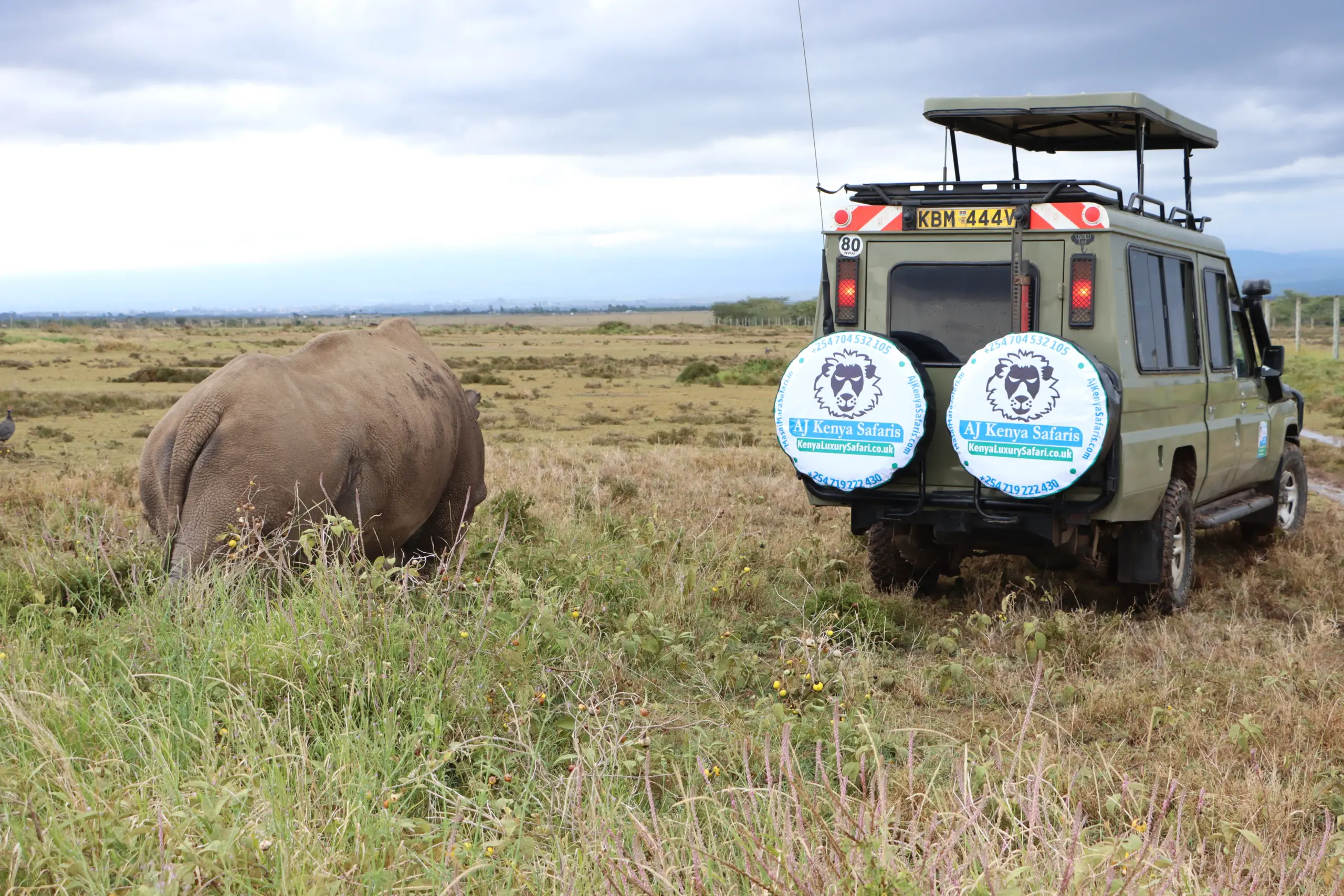
Flying to the Masai Mara is an excellent choice for a quicker and more comfortable option. Flights from Wilson Airport in Nairobi take about an hour, making it a convenient alternative to the long road journey. Several airlines, including Air Kenya, Safarilink, and Governors Aviation, operate flights to the Masai Mara, with about a dozen masai mara airstrips scattered across the region to facilitate access to various lodges and camps. These airstrips make the Masai Mara suitable for travelers seeking both convenience and a scenic aerial view of the stunning landscapes. Keep in mind that there is a combined luggage limit of 15 kg for carry-on and checked baggage.
Whether you choose to drive or fly, both options offer unique perspectives and experiences, ensuring that your journey to the Masai Mara is as memorable as the safari itself.
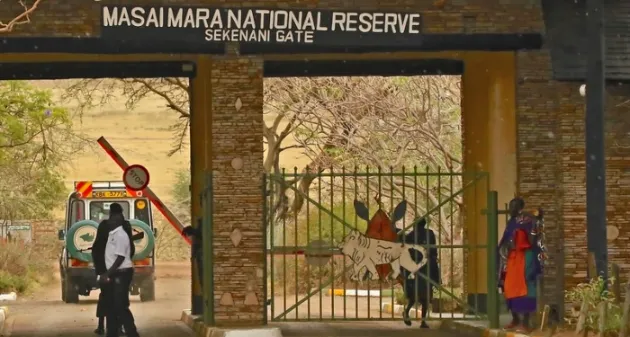
Masai Mara Safari Camps
Finding the perfect place to stay is crucial for enhancing your Masai Mara safari experience. The reserve boasts a variety of accommodations, from luxury tented camps to traditional lodges, catering to different preferences and budgets. Among the prominent options is the Fairmont Mara Safari Club, offering luxurious tented accommodations with elegant decorations and modern amenities, set alongside the picturesque Mara River for those seeking opulence. Another notable option is the Mara Serena Lodge, which provides panoramic views of the Mara River and blends seamlessly into the natural environment while offering top-notch amenities.
For those seeking exclusive experiences, the Olare Mara Kempinski Camp and the luxurious Mahali Mzuri Camp, owned by Sir Richard Branson, offer unparalleled comfort and personalized services. Similarly, Mara Bushtops and Angama Camp are lodges located in prime areas, providing breathtaking views and exceptional wildlife encounters. The Porini Camp, Olarro Camp, and Cottars Camp offer unique experiences, focusing on eco-friendly practices and intimate settings to connect with nature.
Many safari lodges in the Maasai Mara National Reserve come equipped with amenities such as outdoor swimming pools, gourmet dining, and access to guided game drive excursions. These lodges aim to provide a comprehensive safari experience, ensuring guests can relax and enjoy the natural beauty of the reserve in comfort and style.

In addition to luxury, many lodges offer unique activities that enhance the overall safari experience. Imagine enjoying bush meals and sundowners in scenic outdoor settings, adding a magical touch to your adventure. With a variety of camps and lodges available, finding the perfect accommodation in the Masai Mara is easy, allowing you to focus on the incredible wildlife and landscapes.
Safari Activities in Masai Mara
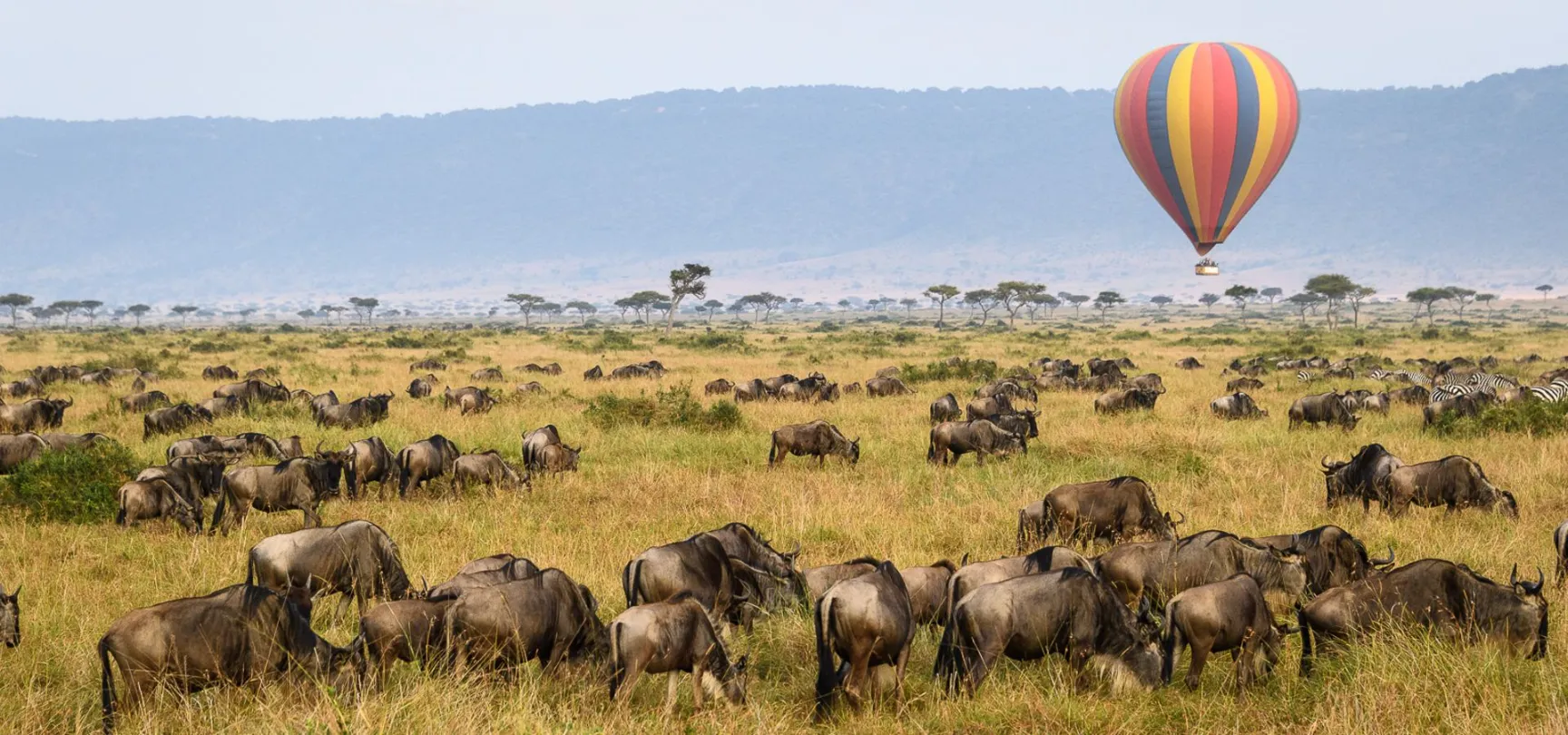
The Masai Mara offers a plethora of activities that cater to all types of adventurers. Game drives are the most popular way to explore the reserve, allowing visitors to get up close with the incredible wildlife. These drives are typically led by experienced safari driver guides who provide fascinating insights into the behaviors and habitats of the animals. For a truly unique experience, consider hot air balloon safaris. Floating above the savannah at sunrise provides an unparalleled aerial perspective of the landscape and its inhabitants, making it a highlight of any visit to the Masai Mara.
Walking safaris in private conservancies offer a chance to connect with nature on a deeper level for those seeking a more immersive experience. Guided by expert trackers, these walks provide a unique opportunity to learn about the smaller details of the ecosystem that are often missed during vehicle safaris. Night game drives are another thrilling option, allowing visitors to observe nocturnal wildlife such as leopards and bush babies in their natural habitat.
In addition to these activities, many lodges offer bush dining experiences and Maasai cultural tours, providing a well-rounded safari adventure. Whether you prefer the excitement of a game drive or the tranquility of a walking safari, the Masai Mara has something for everyone.
Wildlife Viewing in Masai Mara
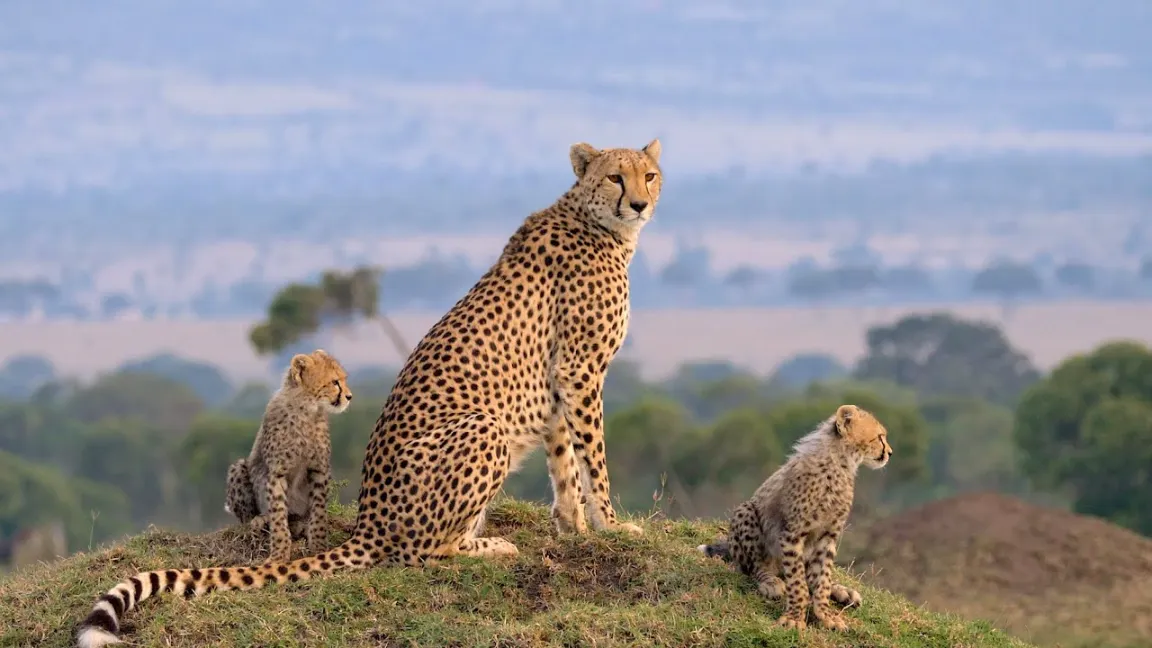
The Masai Mara is synonymous with exceptional wildlife viewing, and for good reason. The reserve is home to the Great Migration, one of the most spectacular wildlife events on the planet. This annual migration sees over 1.5 million wildebeests, zebras, and gazelles travel between the Serengeti and the Masai Mara in search of greener pastures. Witnessing this phenomenon, particularly the dramatic river crossings at the Mara River, is an experience that will stay with you forever.
In addition to the migration, the Masai Mara is home to an impressive array of wildlife, including the majestic African bush elephant. These gentle giants roam the expansive plains, offering visitors a chance to observe their social interactions and family dynamics in their natural habitat. The presence of the African bush elephant, along with other iconic species, contributes to the reserve’s reputation as a premier wildlife destination.
The dry season, which lasts from June to October, is the optimal period for wildlife viewing in the Masai Mara. This timeframe offers the best opportunities to observe diverse wildlife. During this period, the vegetation is sparse, making it easier to spot animals. The comfortable temperatures and sunny days also contribute to an optimal safari experience. Many accommodations in the Masai Mara provide opportunities to witness the migration from the comfort of luxury tents, ensuring you don’t miss a moment of the action.
The Mara Triangle, a section of the reserve, is particularly renowned for its concentration of wildlife. It serves as both the entry and exit point for migrating herds, making it a prime location for game viewing. With its abundant resident wildlife, including the Big Five, and stunning landscapes, the Masai Mara offers a wildlife viewing experience like no other.
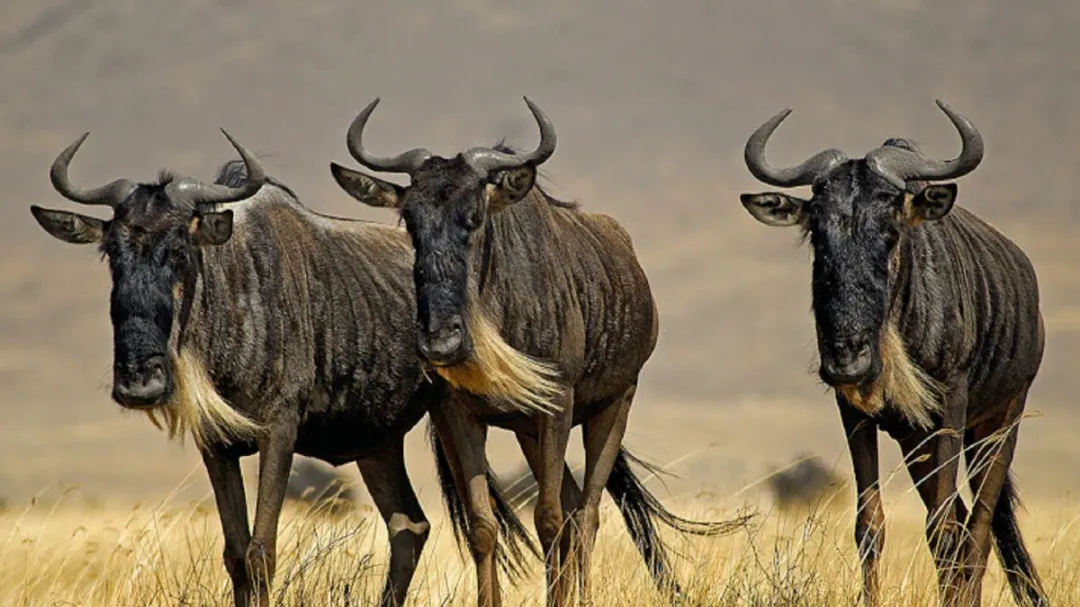
Safety Tips for Visiting Masai Mara
Safety is paramount when visiting the Masai Mara. Always follow your guide’s instructions during wildlife observation to minimize risks. Guides are well-versed in animal behavior and know how to keep you safe while providing an enriching experience. When on a walking safari, it is crucial to stay close to your guide and watch your footing to avoid dangerous encounters with wildlife.
Approaching wildlife too closely can provoke aggressive reactions, so it’s important to maintain a respectful distance at all times. Activities like jogging in wildlife areas should be avoided, as they can attract predators and increase the risk of an attack.
Using insect repellent is also essential to protect against bites from mosquitoes and tsetse flies. Packing a first aid kit with basic medications, including malaria pills and pain relievers, can be a lifesaver in the event of minor injuries or illnesses. By taking these precautions, you can ensure a safe and enjoyable safari experience in the Masai Mara.
What to Pack for Your Masai Mara Safari
Packing for a Masai Mara safari requires thoughtful planning to ensure a comfortable and enjoyable trip. Start with clothing that blends with the natural environment to avoid attracting unwanted insects like tsetse flies. Light clothing is ideal for the hot daytime temperatures, but be sure to include warmer clothing like sweaters for cooler evenings and possible rain.
Essential items include a hat and sunscreen to protect against the strong sun during the day. Comfortable shoes, such as hiking boots or sneakers, are recommended for bush walks and hiking. Staying hydrated, using sunscreen, and wearing a hat are crucial for personal safety during outdoor activities.
Additionally, bring a camera with extra batteries to capture the wildlife and memorable moments during the safari. Binoculars are useful for observing distant animals and bird species clearly. Personal hygiene items such as toothbrushes, deodorant, and wet wipes are important for maintaining cleanliness.
By packing thoughtfully, you can focus on enjoying the incredible experiences that await you in the Masai Mara.
The Role of Local Maasai Communities
The local Masai tribes play a crucial role in the conservation of the Masai Mara National Reserve, which is a vital wilderness area. By leasing their land to tourism operators and conservancies neighboring the reserve, they help protect wildlife habitats and generate sustainable income for their communities. This collaborative approach has ensured that the Maasai people can maintain their traditional lifestyles while engaging in eco-tourism, fostering a symbiotic relationship between conservation and cultural preservation in East Africa.
Community-led conservation initiatives, such as the Nashulai Maasai Conservancy, illustrate how traditional practices can coalesce with modern conservation strategies to enhance environmental stewardship. These efforts are vital for important wildlife conservation, not just in the Masai Mara, but across the broader Central Africa region. Programs like ‘Wildlife Pays’ provide financial incentives to the Maasai for protecting predators, thereby reducing retaliatory killings and promoting coexistence between wildlife and livestock.
While visiting a Maasai village offers a unique insight into the traditions and lifestyles of the Maasai tribes, it’s crucial to remain aware of potential wildlife attacks when exploring these wilderness areas. These masai village tours typically involve a small fee that supports the local community, allowing visitors to contribute directly to the preservation of Maasai culture and conservation efforts.
Summary
In summary, the Masai Mara National Reserve is a jewel in Kenya’s crown, offering unparalleled wildlife viewing, diverse activities, and rich cultural experiences. From the Great Wildebeest Migration to the immersive bush walks, every moment spent in the Masai Mara is filled with awe and wonder. By understanding the ideal times to visit, how to get there, and what to pack, you can ensure a seamless and unforgettable safari adventure.
Engaging with the local Maasai communities not only enriches your experience but also contributes to the conservation efforts that keep this unique ecosystem thriving. So, pack your bags, follow the guidelines, and get ready for an adventure of a lifetime in the Masai Mara. Your journey into the heart of Africa awaits.
Frequently Asked Questions
When is the Ideal time to visit the Masai Mara?
The ideal time to visit the Masai Mara is from June to October during the dry season, as this period aligns with the Great Wildebeest Migration, offering an unparalleled wildlife experience. However, the Masai Mara is a year-round safari destination, with each season bringing its unique charm and wildlife encounters. For those planning a longer safari holiday, visiting during different times of the year can provide varied experiences, from witnessing the lush green landscapes of the wet season to enjoying the high concentrations of wildlife during the dry months.
How can I get to the Masai Mara?
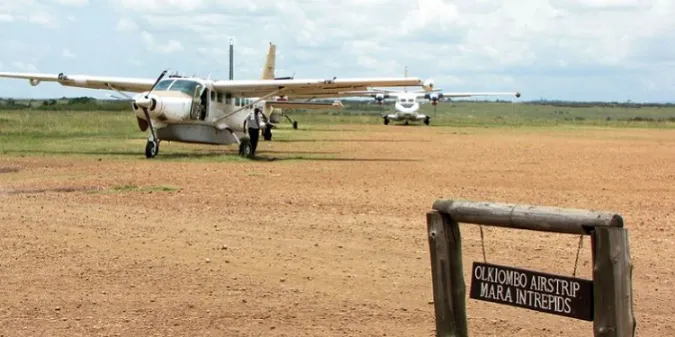
You can get to the Masai Mara by road, which takes about 5.5 to 6.5 hours from Nairobi, Kenya’s bustling capital city. Alternatively, you can travel by air, with flights from Wilson Airport taking approximately one hour.
What should I pack for a safari in the Masai Mara?
For a safari in the Masai Mara, it is essential to pack light, breathable clothing for daytime, warmer layers for the evening, comfortable shoes, a hat, sunscreen, insect repellent, and a camera with extra batteries and binoculars. This preparation ensures a comfortable and enjoyable experience while exploring the wildlife.
What activities can I do in the Masai Mara?
You can engage in activities such as day and night drives, hot air balloon safaris, bush walks night game drives, bush dining, and Maasai cultural tours in the Masai Mara. Each offers a unique way to experience the rich wildlife and culture of the region.
How do the local Maasai communities contribute to conservation?
The local Maasai communities significantly contribute to conservation by leasing land to tourism operators, participating in community-led initiatives, and engaging in programs like ‘Wildlife Pays’ that foster coexistence between wildlife and livestock. This collaborative approach benefits both the environment and the community.
When was the Masai Mara Established?
The Masai Mara was established as a wildlife sanctuary in 1961. This marked an important step in wildlife conservation, making the Masai Mara important for preserving the diverse species and unique ecosystems within the Serengeti- Mara ecosystem.
Information About Masai Mara and Conservancy:
Welcome to AjKenya Safaris
Thanks for stopping by! We’re excited to help you plan an unforgettable safari.
- Phone: +254 748 258880
- WhatsApp: +254 748 258880
- Email: [email protected]
- Email: [email protected]

